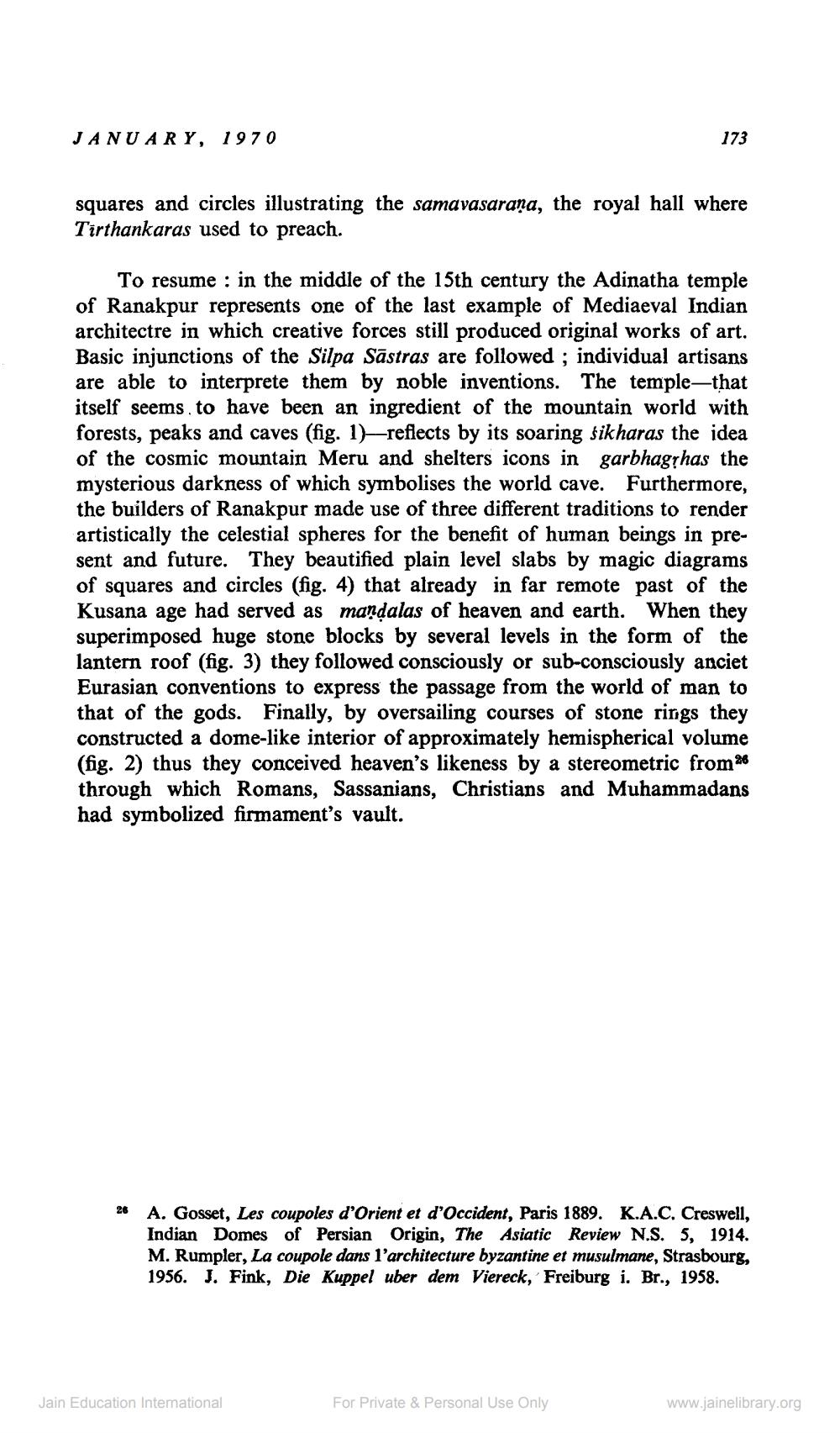________________
JANUARY, 1970
173
squares and circles illustrating the samavasarana, the royal hall where Tirthankaras used to preach.
To resume : in the middle of the 15th century the Adinatha temple of Ranakpur represents one of the last example of Mediaeval Indian architectre in which creative forces still produced original works of art. Basic injunctions of the Silpa Sāstras are followed ; individual ar are able to interprete them by noble inventions. The temple—that itself seems to have been an ingredient of the mountain world with forests, peaks and caves (fig. 1)-reflects by its soaring śikharas the idea of the cosmic mountain Meru and shelters icons in garbhagîhas the mysterious darkness of which symbolises the world cave. Furthermore, the builders of Ranakpur made use of three different traditions to render artistically the celestial spheres for the benefit of human beings in present and future. They beautified plain level slabs by magic diagrams of squares and circles (fig. 4) that already in far remote past of the Kusana age had served as mandalas of heaven and earth. When they superimposed huge stone blocks by several levels in the form of the lantern roof (fig. 3) they followed consciously or sub-consciously anciet Eurasian conventions to express the passage from the world of man to that of the gods. Finally, by oversailing courses of stone rings they constructed a dome-like interior of approximately hemispherical volume (fig. 2) thus they conceived heaven's likeness by a stereometric from a through which Romans, Sassanians, Christians and Muhammadans had symbolized firmament's vault.
26
A. Gosset, Les coupoles d'Orient et d'Occident, Paris 1889. K.A.C. Creswell, Indian Domes of Persian Origin, The Asiatic Review N.S. 5, 1914. M. Rumpler, La coupole dans l'architecture byzantine et musulmane, Strasbourg, 1956. J. Fink, Die Kuppel uber dem Viereck, Freiburg i. Br., 1958.
Jain Education International
For Private & Personal Use Only
www.jainelibrary.org




